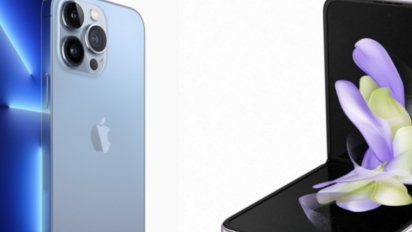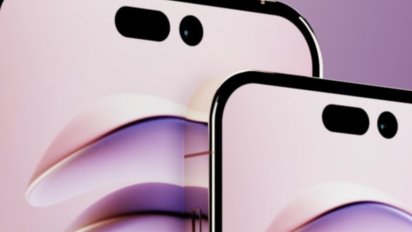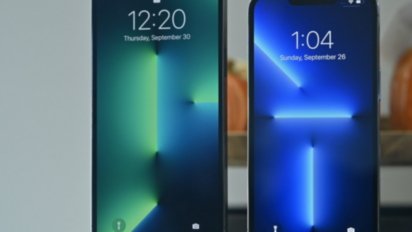Apple introduced the iPhone 13 and iPhone 13 Pro models during its "California Streaming" event in September 2021. The updated pro models included new 120Hz ProMotion displays and significant camera improvements.
Apple tends to reserve its most premium features for the pro iPhone models, and there is feature parity between the iPhone 13 Pro and iPhone 13 Pro Max. That means the only difference between the two models is screen size and battery life, giving customers some ease when choosing their device.
Apple replaced the 2021 models with the iPhone 14 and iPhone 14 Pro lineups in September 2022. While the iPhone 13 Pros are no longer sold by Apple, they can be found at other retailers at a discount.
iPhone 13 Pro Features
Design
At first glance, any user will notice two obvious design changes for the iPhone 13 Pro models — the smaller notch and the large camera bump. There are minor changes to the available colors, though minimal.
Compared to the iPhone 12 Pro, the notch is 20% smaller, giving way to more content viewing space on the front of the device. Apple says it re-engineered Face ID's True Depth camera system to implement this smaller notch.
The camera bump on the device's rear has always been met with some controversy. It exists as a compromise between device thinness and photography physics. There has to be some physical distance between the camera sensor and lens for a quality camera to work.
While each generation of iPhone has seen slightly increased camera bumps over time, this is the most significant leap yet. Each of the three lenses is larger in diameter, the "shelf" they occupy is broader and taller, and the stainless steel rings around each lens are taller. On the iPhone 13 Pro, the camera bump measures over half of the device width and is nearly a quarter of the device height.
The pro models have more subdued graphite, silver, gold, Alpine Green, and Sierra Blue colors. The gold color is slightly altered from previous generations with a softer hue, and Sierra Blue is a more pale version of the Pacific Blue used in the iPhone 12 Pro.
The iPhone 13 lineup has nearly identical measurements compared to the previous generation. However, each device is slightly heavier and 0.01 inches thicker.
| iPhone 13 mini | 131.5/5.18 | 64.2/2.53 | 7.65/0.30 | 141/4.97 |
| iPhone 13 | 146.7/5.78 | 71.5/2.82 | 7.65/0.30 | 174/6.14 |
| iPhone 13 Pro | 146.7/5.78 | 71.5/2.82 | 7.65/0.30 | 204/7.19 |
| iPhone 13 Pro Max | 160.8/6.33 | 78.1/3.07 | 7.65/0.30 | 240/8.46 |
| iPhone SE (2020) | 138.4/5.45 | 67.3/2.65 | 7.3/0.29 | 148/5.22 |
| iPhone 12 mini | 131.5/5.18 | 64.2/2.53 | 7.4/0.29 | 135/4.76 |
| iPhone 12 | 146.7/5.78 | 71.5/2.82 | 7.4/0.29 | 164/5.78 |
| iPhone 12 Pro | 146.7/5.78 | 71.5/2.82 | 7.4/0.29 | 189/6.66 |
| iPhone 12 Pro Max | 160.8/6.33 | 78.1/3.07 | 7.4/0.29 | 228/8.03 |
Aluminum models were shared in April showing the same expected designs portrayed in earlier leaked diagrams. Things like a larger camera bump, no mini model, and a rear three-camera system for pros was corroborated by these models.
Display
The Super Retina XDR display has the same pixel-dense OLED with P3 color and Ceramic Shield from previous models. However, this generation's display is up to 25% brighter outdoors and has a variable refresh rate from 10Hz to 120Hz.
Apple refers to this variable refresh rate as ProMotion, and it adds a lot of new functionality to the iPhone that wasn't possible before. For example, the display will alter its refresh rate to match whatever is on the screen when viewing content.
Because the display can slow its refresh to as little as 10Hz, there are significant battery life savings when performing certain tasks. For example, battery life expectancy when viewing video has essentially doubled from the previous generation thanks to viewing 30Hz movies at their native frame rate.
The iPhone can crank its brightness up to 1200 nits when viewing HDR content. That extra brightness will improve photo and video viewing, especially in bright environments.
iPhone 13 Pro Cameras
Wide
Thanks to a slightly wider aperture, f/1.5 instead of f/1.6, and a larger sensor, Apple says the Wide-angle lens can take in up to 2.2 times more light. That means better photos in low light, improved night mode performance, and a faster shutter in most lighting conditions.
The LiDAR scanner also plays a part in capturing sharper low-light photos. Since it can map image depth, the image signal processor has more information for processing composites.
Ultra-Wide
The Ultra-wide camera also saw significant improvements in low-light performance. It can capture up to 92% more light thanks to a wider aperture and a bigger sensor. Night mode is also available on this lens for the first time.
An improved autofocus system adds a new ability to the iPhone 13 Pro — macro photography. When using the Ultra-wide lens, users can take photos two centimeters away from the subject. Macro mode also works when shooting video.
The macro capability is usually reserved for specialized lenses that can focus on subjects that are incredibly close to the lens. Apple hasn't included an actual macro lens but uses software to create "macro" photos based on a few elements.
The ultra-wide camera has autofocus for the first time, enabling this lens to detect subjects and focus on them. Due to the nature of an ultra-wide lens, the camera has an unusual perspective compared to the wide or telephoto lens. Thanks to these characteristics of an ultra-wide lens and some smart algorithms, Apple can produce high-quality close-up images.
By default, the iPhone intelligently switches to macro mode when it detects the camera is close to a subject. This shift can be jarring, especially when shooting video, so Apple has a toggle in the Settings app to add a button to the Camera app UI.
When the "Macro Control" setting is on, a button will appear in the Camera app UI when the camera detects it is near an object. Tapping this button, which has a flower on it, will temporarily turn off macro mode.
Telephoto
The new Telephoto lens offers 3x optical zoom with a 77mm focal length. This lens has a more robust natural bokeh on subjects close to the camera and helps improve the iPhone's Portrait Mode effect.
The aperture in the Telephoto lens isn't quite as wide as the iPhone 12 Pro due to the longer lens. However, this is balanced out by improved image processing with the A15 image signal processor.
New camera features
Cinematic Mode is an algorithmic video function similar to Portrait Mode for photos. It creates an artificial bokeh around the subject while intelligently tracking them. It also detects when the subject changes or a person looks away from the camera.
Since this effect is applied via an algorithm, it can be adjusted after recording. In addition, Apple says modern devices running iOS 15 can edit the footage with support for Mac editing coming in a later update.
Photographic Styles are another feature that takes advantage of Apple's advanced photography pipeline. Users can create preset rules for the camera to capture their style of photo while shooting. These aren't filters but intelligent processing alterations that take skin tone and the environment into account.
ProRes is a professional video codec coming to iPhone 13 Pro and iPhone 13 Pro Max in a later update of iOS 15. Like RAW formats for photos, ProRaw gives videographers more metadata to edit when processing a video. However, these files can quickly become large, so 4K HDR ProRAW is only available on storage sizes above 128GB.
A15 Bionic processor
The A15 is a custom Apple Silicon processor built on the 5nm process with a 5-core GPU in pro models, a faster Neural Engine, and an advanced ISP. Apple says the new processor results from collaborative efforts to bring ideas to life, not just hit another spec goal.
The speed increases and advancements in machine learning intelligence enable many new computational feats, like the Neural Engine computing 15.8 trillion operations per second. That translates into features like the new Cinematic mode and Photographic Styles setting.
Apple differentiated the A15 Bionic between standard and pro iPhone models. The company hasn't gone into much detail, but the 5-core GPU is the key differentiator. Some new features like ProRes recording are restricted to the pro devices due to the difference in computing power.
The A15 provides enough efficiency improvements that battery life is more than an hour longer in every model. The already massive battery life of the biggest iPhone increased by another 2.5 hours, thanks to the A15 and ProMotion.
True Depth Camera System
The True Depth camera system was redesigned so that it fits in a space that is 20% smaller. Ever since the iPhone X, users have asked for a smaller notch or its removal. Some Apple competitors adopted the notch design, then quickly jumped to hole-punch displays.
The Face ID system is unchanged from previous generations. It consists of six different sensors used to scan a user's face for biometric security. It includes the infrared camera, flood illuminator, proximity sensor, ambient light sensor, dot projector, and selfie camera.
The selfie camera also remains unchanged from the iPhone 12 Pro models, though the A15 Bionic has an improved image signal processor, which will produce better images from the same camera. The iPhone 13 Pro selfie camera is also capable of Cinematic Mode video and Photographic Styles for photos.
Apple added the ability to authenticate users who are wearing a mask with a new version of Face ID. It is available in iOS 15.4 and acts as a separate system that replaces the standard Face ID.
The new system relies on details found around a person's eyes rather than the eyes, nose, and mouth. Because of this, it won't work with sunglasses and users must register the glasses they wear for improved accuracy.
MagSafe
MagSafe remains a primary feature in the iPhone 13 lineup. The feature set hasn't changed, though Apple is happy to tout the expanding accessory lineup for the system.
Since MagSafe is universal, users won't need to purchase new accessories for compatibility with the new iPhones, except for maybe the case. The MagSafe Charger, Wallet, and MagSafe Battery Pack work as before.
Apple did announce an update to the MagSafe Wallet that enables using the Find My network to locate it. This doesn't replicate the functionality of an AirTag but does alert the iPhone of its last attachment location to help the user in finding it.
Third-party manufacturers have made an abundance of accessories using Apple's magnetic system. This means customers can purchase accessories for their iPhones, like bedside chargers and wallets, without worrying about future compatibility.
Wireless Capabilities
5G
Apple introduced 5G capabilities in the iPhone 12 lineup and increased the number of available antenna bands for the iPhone 13. All models have 5G with sub-6GHz and mmWave capabilities, but Apple only supports mmWave in the United States.
The addition of new bands means some users in some locations may see faster download speeds thanks to access to that band. Some users report a jump of 40MB/s to 400MB/s between iPhone generations.
The mmWave 5G band is only available in select locations like big city centers or sports stadiums. A user could see gigabit download speeds in a direct-line-of-sight of a mmWave 5G tower. Of course, network congestion in a crowded location will cause that speed to drop significantly.
WiFi 6
Apple uses 802.11ax with 2x2 MIMO, or WiFi 6, in its latest devices. It is a highly efficient standard that quadruples throughput and translates to 75% lower latency when compared to 802.11ac.
Users with WiFi 6 routers and high-speed internet connections will notice a significant speed increase over older iPhone models. Lower latency, fewer dropouts, and faster connections mean an overall improved WiFi experience for the user.
Bluetooth 5.0
The latest Apple devices support Bluetooth 5.0, offering connection improvements and range over previous generations. The spec includes support for Bluetooth Low Energy, introduced in Bluetooth 4.0, which is essential for products that need smaller power supplies.
What Bluetooth 5.0 means for iPhone users is simple — better connections over longer distances. Bluetooth still isn't a great medium for data transfer, but it works great for streaming music to a set of wireless headphones like Apple's AirPods.
Apple Self Service Repair Program
The Self Service Repair program gives customers the ability to repair a broken iPhone from the comfort of their own homes. If a customer doesn't have an Apple Authorized Service Provider nearby, or they just want to tackle the repair themselves, then the Self Service Repair program acts as an alternative option.
The tools and parts are sold at the same prices Apple pays when ordering them in-store. Some repairs may save the customer a dollar or two using the program, but it means doing the labor themselves and sacrificing any liability that the Apple Store would take for a botched repair.
The program only exists for iPhone models released in the last few years like the iPhone 13 Pro or iPhone SE for now. It is expected to expand to M-series Macs in the near future.
Comparing iPhone models
iPhone 13 Pro versus iPhone 13
The iPhone 13 Pro is made from stainless steel, making it heavier than the iPhone 13. The camera module is larger for pro models, so users will have to be careful to get the correct case size.
Pro models have Promotion, which means the display can alter its refresh rate based on content with a maximum of 120Hz. This also provides an advantage to battery life when watching a video or viewing static text.
Graphics applications will perform slightly better on pro iPhones thanks to an additional GPU core. The standard model has four cores, while the pro has five.
Pro users get all-around better cameras thanks to a wider aperture on the wide and ultra-wide lenses. The 3x telephoto also adds 3x portraits and overall better zoom modes.
Standard iPhones also do not get access to ProRES video or Macro photo modes. The largest differences users will see between these devices in day-to-day use is in the cameras.
Read the spec breakdown and more feature differences in the full report: iPhone 13 Versus iPhone 13 Pro.
iPhone 13 Pro Max versus Samsung Galaxy S22 Ultra
Samsung released the Samsung Galaxy S22 Ultra in February 2022 as a new flagship model that acts as a successor to the S21 Ultra and Galaxy Note series all in one. It has a 6.8-inch AMOLED display with a camera cutout in the display.
The iPhone 13 Pro Max and Galaxy S22 Ultra have similar dimensions with the iPhone coming in slightly smaller. However, the iPhone weighs more thanks to its stainless steel frame.
The large HDR displays both output higher nits when viewing HDR content, iPhone at 1200 nits peak versus the S22 Ultra at 1750 nits peak. Everyday use shows the iPhone keeps a higher average nit count, but this can be adjusted in settings on the S22 Ultra.
While the iPhone has ProMotion with a 120Hz variable refresh, the S22 Ultra can reduce its refresh rate to 1Hz. This enables an always-on display for the Samsung model, similar to how the Apple Watch works.
Samsung offers in-screen fingerprint scanning and face recognition for biometrics. However, face recognition isn't as robust as iPhone's Face ID and can be fooled by 2D images in certain conditions.
The S22 Ultra has an S Pen, which is a small stylus hidden within the chassis of the phone. The large display and a portable stylus make for a compelling portable notepad. This fan-favorite feature is highly dependent on the individual use case.
Users won't notice much performance lag when using either device for day-to-day tasks. Apple's A-series processors have always led the industry, but Samsung's custom chipset provides more than enough performance power that users won't notice any slowdown.
The iPhone has a three-camera system and the Samsung Galaxy S22 Ultra has a four-camera system similar to iPhone's with one additional zoom lens. That extra zoom capability benefits Samsung in many of our photo comparisons.
Each shot had positives and negatives for both devices. iPhone's portrait mode tended to perform better with more edge refinement and depth, while Samsung's showed its strengths in complex lighting environments like on a stage during a musical performance.
Cameras tend to be very opinionated and we saw Apple's and Samsung's opinions on photography represented across both devices. The iPhone tended to lean neutral, but struggled with over-sharpening to compensate for lack of zoom detail. Samsung made colors pop, sometimes at the detriment of the photo, but excelled at controlling complex, high-contrast images.
Read the spec breakdown and more feature differences in the full report: iPhone 13 Pro versus Samsung Galaxy S22 Ultra. See the full camera comparison with images.
iPhone 13 Pro and iPhone 13 Pro Max Review
The upgrades made for the iPhone 13 Pro and iPhone 13 Pro Max make for some impressive smartphones. Though the larger of the two still leaves us wanting for better big-screen software support.
We like the new Sierra Blue however we'd welcome more saturated colors in the future pro models. Both devices are slightly heavier and thicker than their predecessors, which doesn't help with the awkward size of the 6.7-inch model.
ProMotion is a killer feature that still needs some work across iOS 15. New developer tools for targeting the higher refresh rates will be available soon, so more apps will take advantage of it. We found that going from 120Hz to 60Hz felt similar to looking at SD content after seeing HD for the first time, and it can be jarring.
Even with the brighter displays and faster refresh rate, Apple still has some work to do for the iPhone 13 Pro Max. Strangely, the device has bigger widgets than the iPad mini 6, even with the smaller screen, so we believe Apple could change scaling to take better advantage of the large iPhone display. Only those who want the most battery life and biggest iPhone screen should consider this massive smartphone.
The camera system has been rebuilt from the ground up with bigger and better cameras, features, and controls. Every aspect of photography and videography benefits from the upgraded Wide lens, the wider aperture in the Ultra-Wide lens, and the 3x zoom in the Telephoto lens.
Macro photography requires an expensive kit and some level of photographic expertise to pull off passably. However, Apple's iPhone 13 Pro models bring macro to the masses with improved focusing systems found in the Ultra-Wide lens. We've loved experimenting with this new photo and video mode and have produced some amazing shots already.
We tried Cinematic Mode and loved how it added depth information to simple videos of our pets or objects. While the system isn't perfect yet, it is clearly a great tool for adding some bokeh to your video. And as a bonus, video shot in Cinematic Mode can be reverted to normal video after the fact.
The A15 Bionic has a faster CPU and more powerful GPU that translates to real-world use. Even if Apple isn't readily bragging about its latest processor gains, we've found significant jumps in performance during our testing.
Despite some bugs at launch and some fiddly features, we've loved testing these new iPhones. The iPhone 13 Pro is the near-perfect smartphone for most people, and we would have given it a 5 out of 5 on its own. The iPhone 13 Pro Max suffers from a lack of proper software support but still provides a great experience and excellent battery life, and we would have scored it 4 out of 5.
Overall, the pro models scored 4.5 stars as a whole.
Pros
- Sierra Blue is a wonderful new color
- Outstanding design carried over from iPhone 12
- All three cameras gained substantial new upgrades
- Cinematic Mode is full of promise
- Photographic Styles are an awesome new addition
- Support for Apple ProRes
- Solid performance gains in graphics
- Battery improvements are greatly noticeable
- ProMotion is noticeable, though more apps will need updated
- MagSafe remains a fantastic feature with more options than ever
- 1TB storage option for media-hungry power users
Cons
- Sierra Blue could be considered too light
- Increased in weight year-over-year
- Many bugs remain at launch
- ProMotion isn't widely supported (yet)
- CPU isn't as big an upgrade as previous year
- No support for Wi-Fi 6e
- No increase in charging speed or data for MagSafe
- iPhone 13 Pro Max doesn't take nearly enough advantage of its larger display
- Cinematic Mode only supports 1080P
Prices and Deals
The iPhone 13 Pro starts at $999 for 128GB storage. That moves up to $1,099 for 256GB, $1,299 for 512GB, and $1,499 for 1TB.
Apple's flagship iPhone 13 Pro Max starts at $1,099 for 128GB of storage. This moves up to $1,199 for 256GB, $1,399 for 512GB, and $1,599 for 1TB.
These are retail prices set by Apple, though, since the devices have been replaced by the iPhone 14 and iPhone 14 Pro, these models should be discounted. New models are no longer in production, though used and renewed models will be available for some time.
Wireless carriers offer a plethora of iPhone deals, with special trade-in offers when you upgrade to the iPhone 13 Pro.
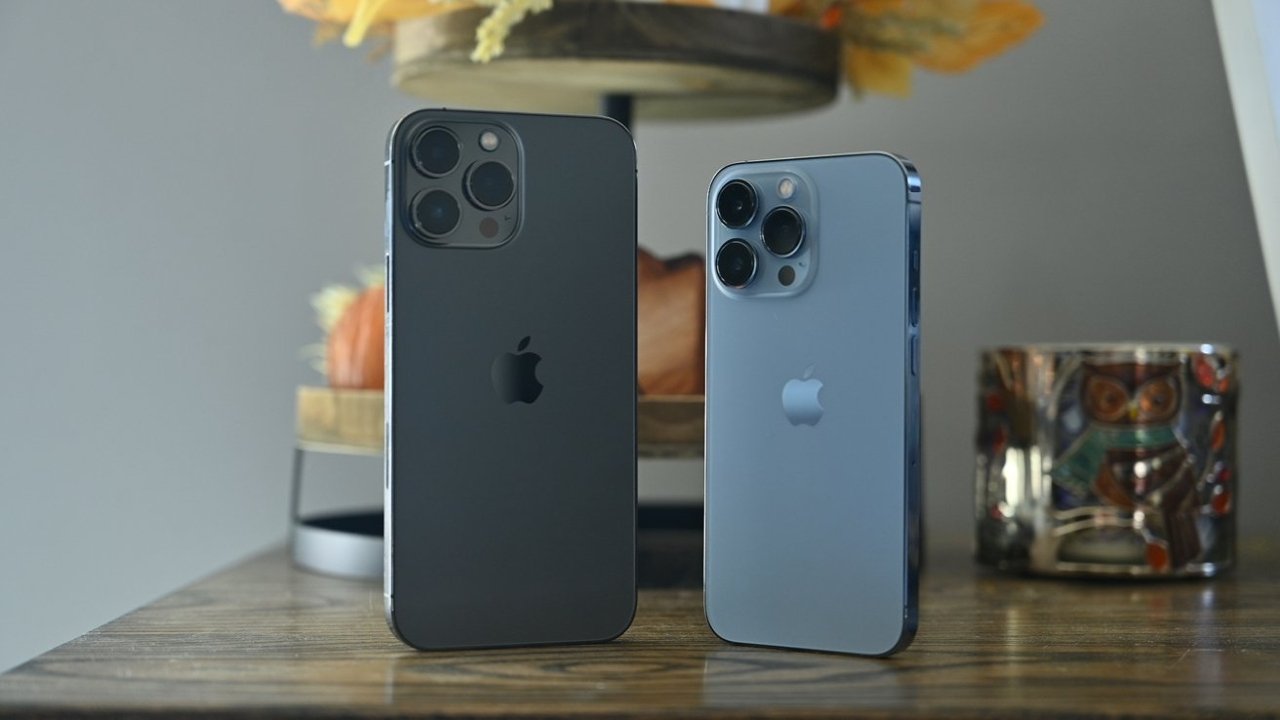
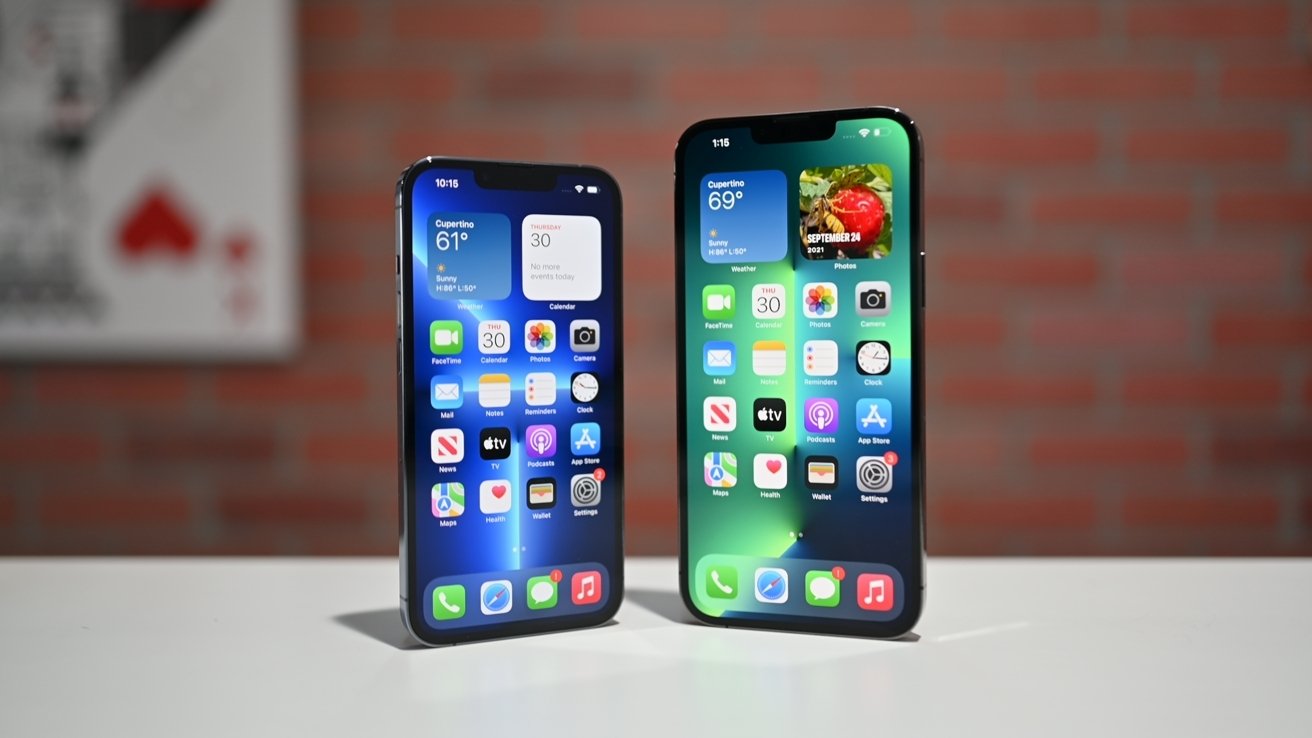
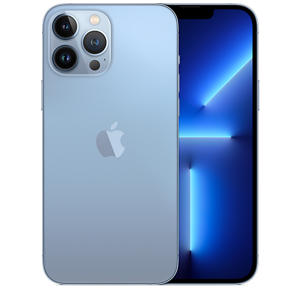
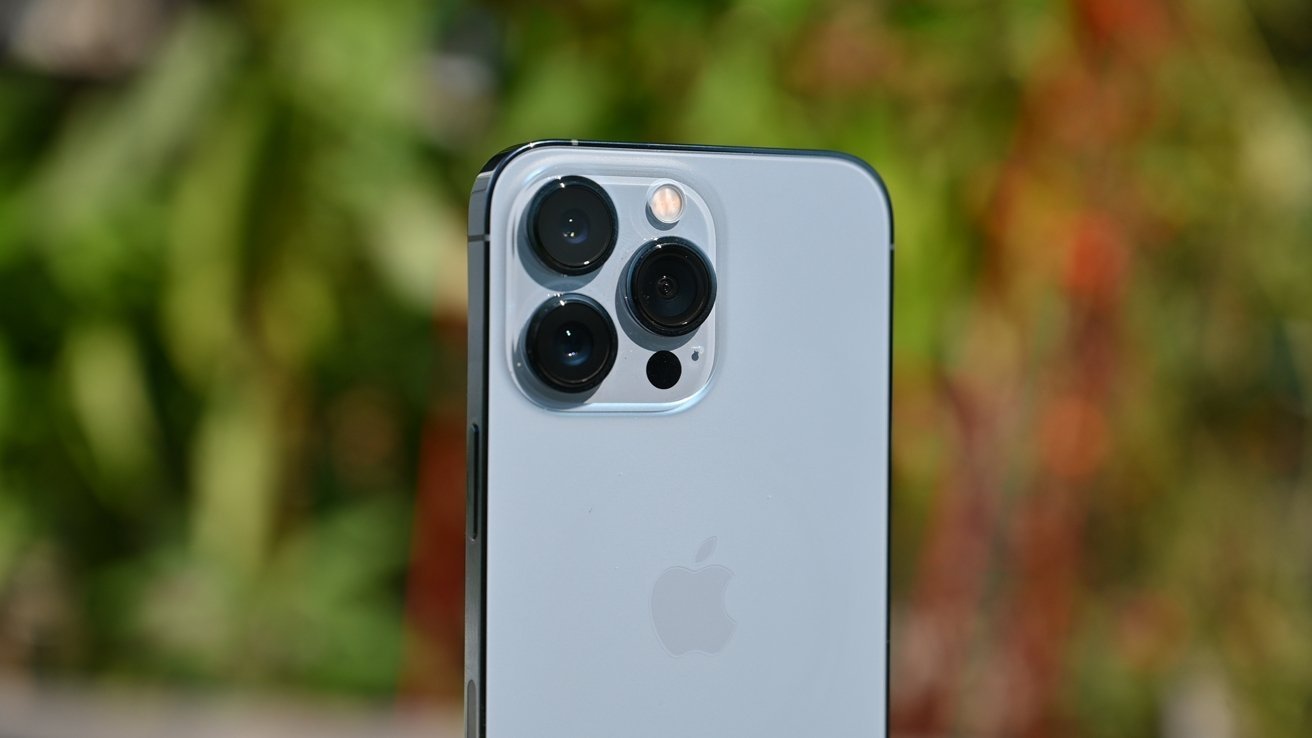
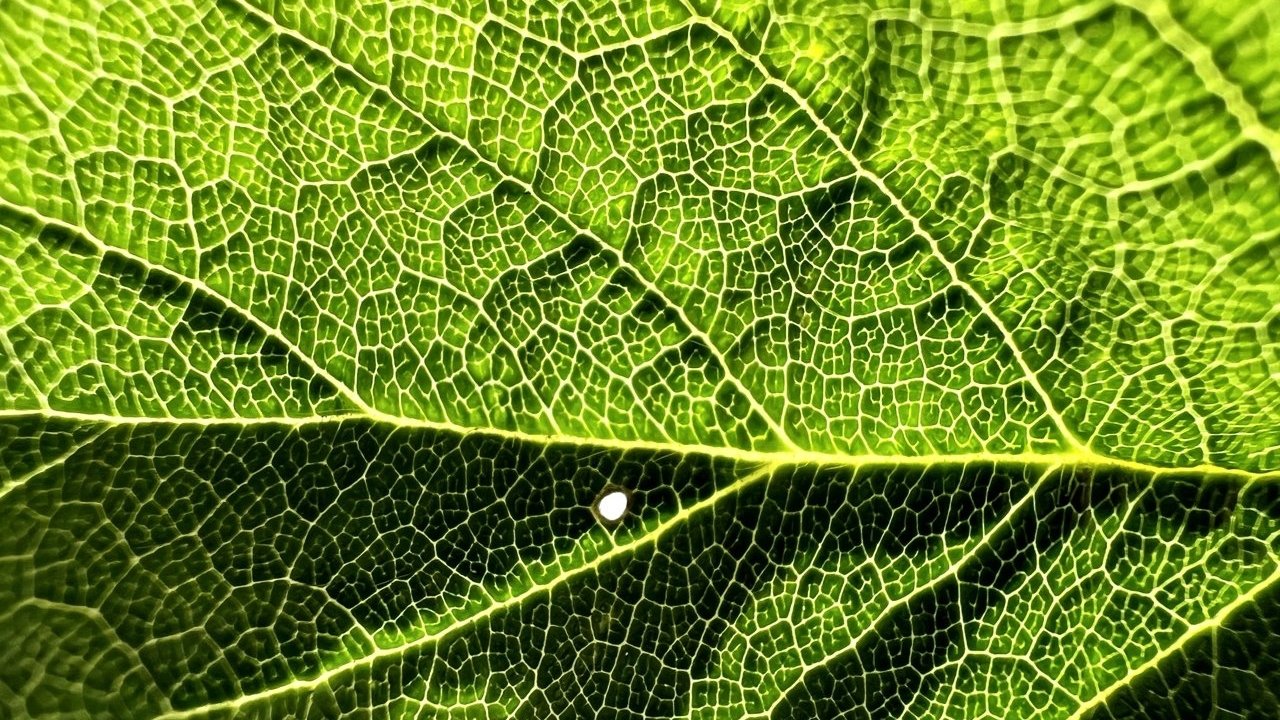
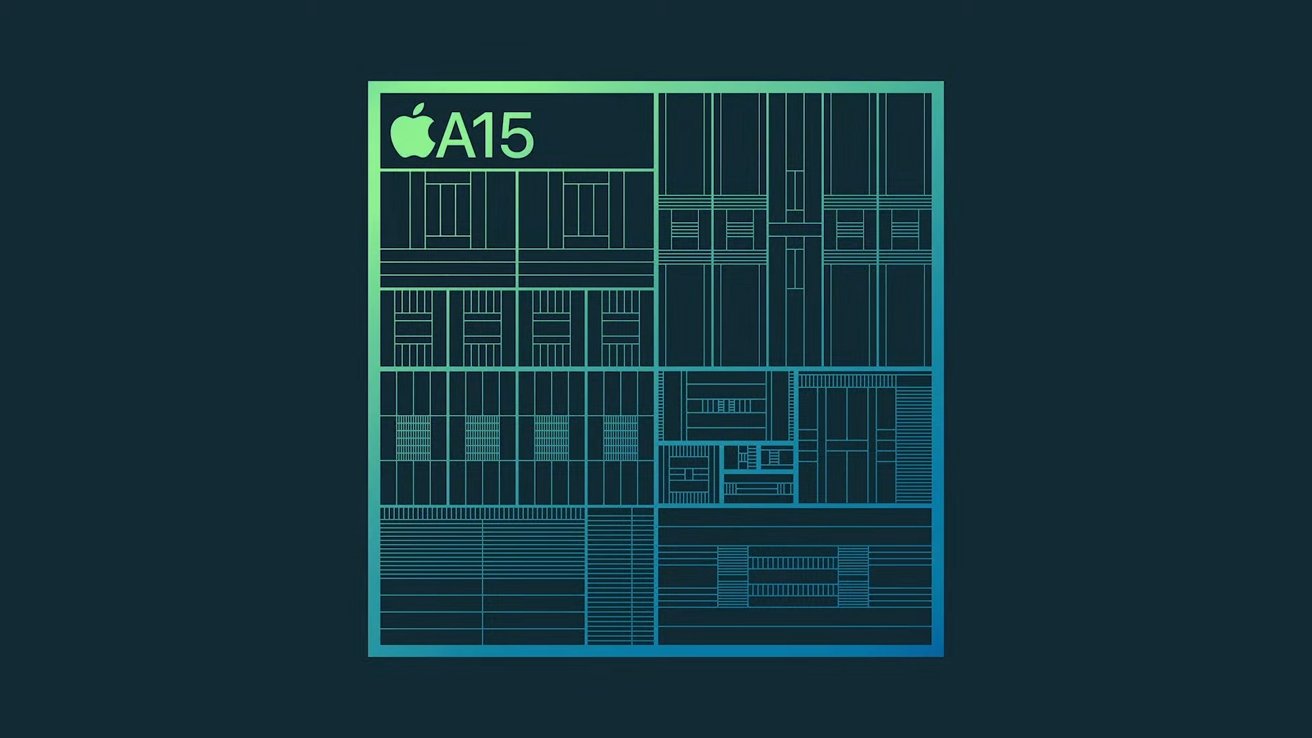
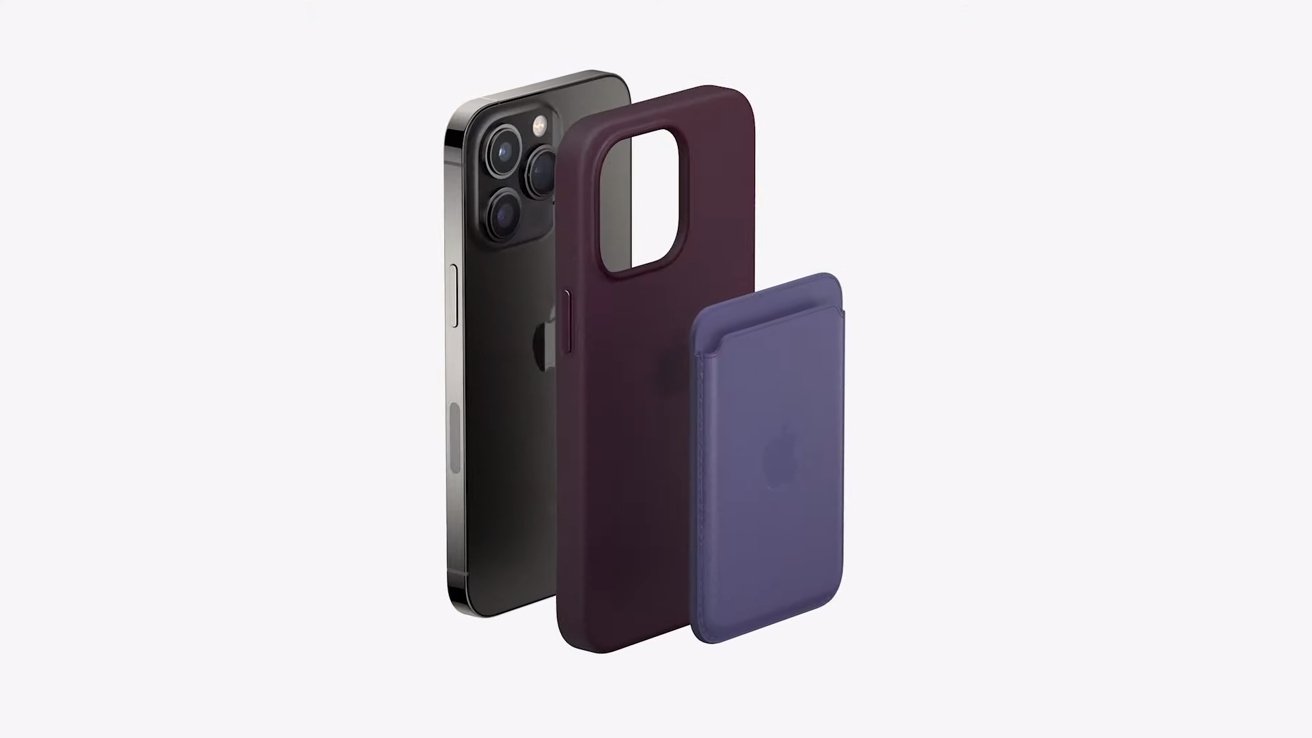
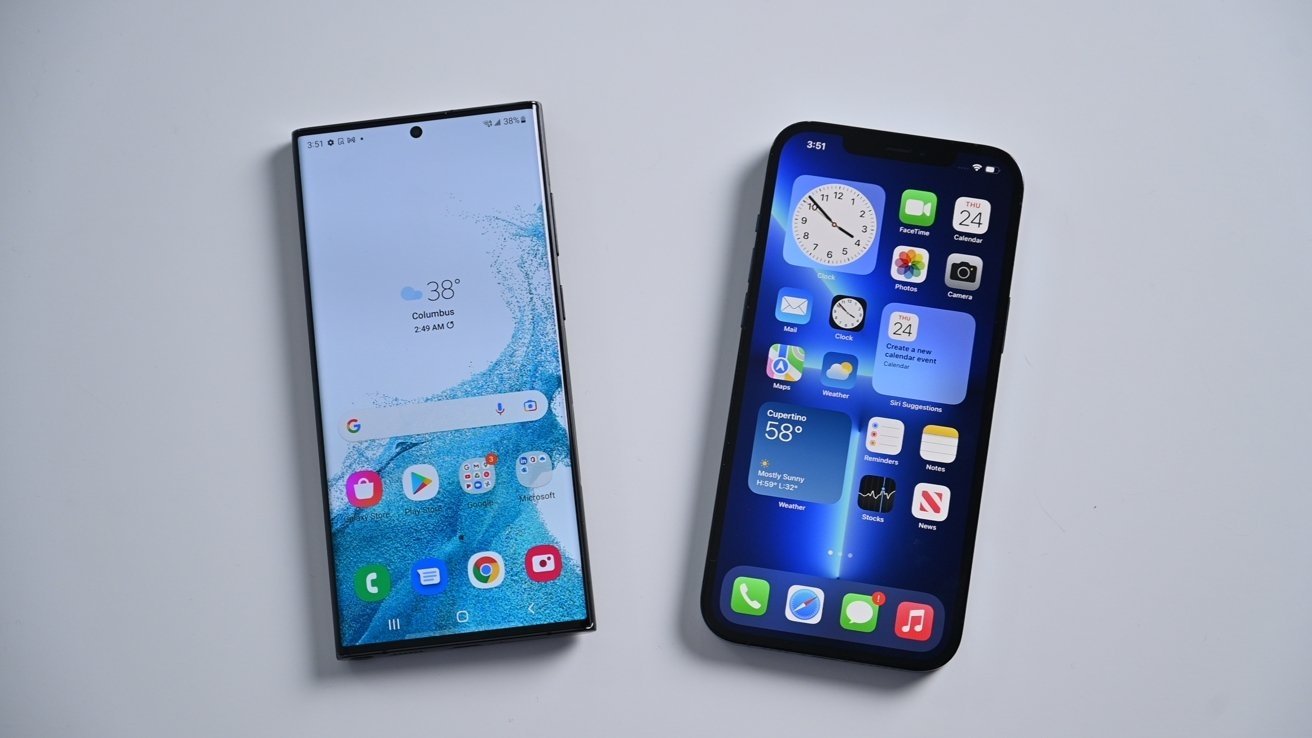

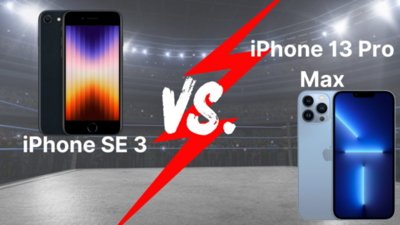
 Michael Stroup
Michael Stroup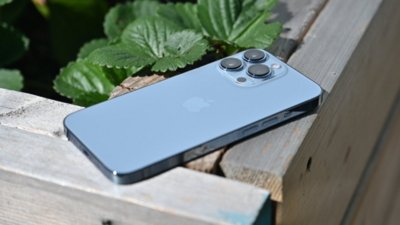
 Wesley Hilliard
Wesley Hilliard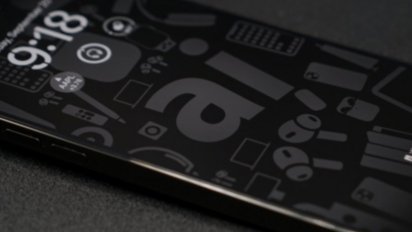
 Malcolm Owen
Malcolm Owen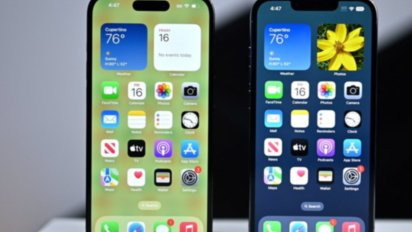
 Mike Peterson
Mike Peterson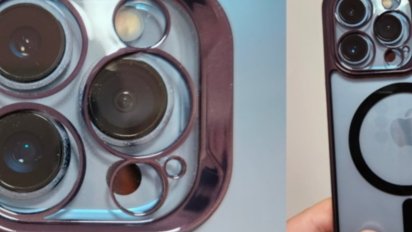
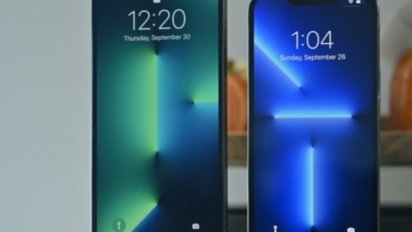

 Andrew O'Hara
Andrew O'Hara